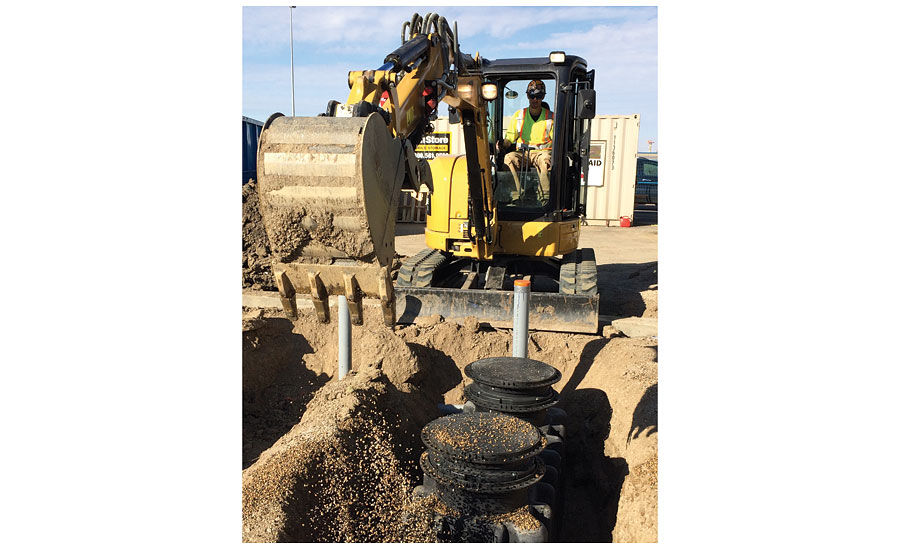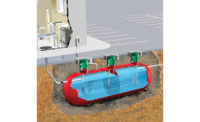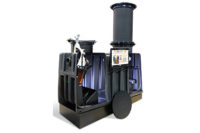Charles Tevis has been in the grease interceptor business for more than 25 years and this is the hottest the market has been in his career.
“In the 1990s when you talked about grease interceptors, one had to do a lot of promoting,” says Tevis, a division manager of grease interceptors at Stoystown, Pa.-based Highland Tank. “In the last couple years regulations to prevent sanitary sewer overflows and all-around increased awareness have resulted in a greater demand.”
Tevis says specifying engineers continue to be a critical element of the market.
“We routinely interface with engineers,” he notes. “We provide lunch-and-learns and participate at ASPE and ASCE events. Often, we are invited to be presenters at CEU courses for engineers, pretreatment coordinators, utilities and building mangers.”
Andrew Bird, business development manager for Endura Separation Technologies, says his company will be teaching a class on grease interceptors during the ASPE Technical Symposium Oct. 19-22 in Montreal. The course content will be based on the “Engineering with Confidence” content that is currently being updated and will focus specifically on sizing methodologies, the pitfalls that can result from uninformed decisions and how to avoid these.
“Stakeholder specific education and training is a key element of our strategy in this market,” Bird says.
Chicago-based MIFAB President Michael Whiteside also believes in the importance of engineers in the business.
“They are critical to MIFAB and the industry,” he says. “We are proud members of ASPE and attend the biannual convention to showcase our latest products. We also regularly make visits to engineer offices to educate them on our new interceptors and other products.”
Zurn Green Turtle Marketing and Engineering Manager of Global Site Works Silvano Ferrazzo states his company fulfils many requests for lunch-and-learns and attends multiple conferences to educate the specifying engineer, regulators, building owners and contractor sectors about the developing FOG industry.
“(The engineers) view us as the experts,” he says. “It always is our goal to educate the industry and let regulators know what they should be considering.”
New options
MIFAB recently released injection- and rotational-molded high-density polyethylene (HDPE) grease and oil interceptors up to 100 gpm with a lifetime warranty.
“These complement our traditional steel and stainless steel interceptor product range,” Whiteside says. “We have received a patent for our unique and labor-saving lid-extension design.”
During the design of a new or updated grease interceptor at MIFAB, working with specifying engineers, building owners and others is important.
“The primary goal is to introduce a design with features our customers have asked us for,” Whiteside says. “The more we can incorporate requested design features, the more accepted and successful the product will be.”
Zurn Green Turtle’s latest product is its 250-gal. FOG-ceptor, a fiberglass hydromechanical unit with a dual manway design with an external flow control device. Zurn Green Turtle developed FOG-ceptor to have a compact unit that can be installed in multiple areas and decrease pumping frequency.
“It is designed to bridge the gap between the inside-the-kitchen hydromechanical interceptor and the outdoor, buried-in-the-ground gravity interceptors,” Ferrazzo says.
According to Bird, Canplas recently expanded its hydro-mechanical interceptors line with an eye toward easier upkeep and installation.
“The key to these products is accessibility for maintenance,” he says. “These units have a clamshell design with a simple push-pull action to activate it. It allows the flow control to be integrated into the unit and is accessible for cleaning.”
Growing markets
The traditional markets — such as hospitality, restaurants and large health-care facilities — remain strong for grease interceptors. But MIFAB sees a burgeoning market for the company’s HPDE units.
“We see a growing interest from municipal water-treatment authorities in HDPE units,” Whiteside says. “That’s because of the problems with concrete interceptors cracking and leeching contaminants into the surrounding environment. We are spending more time making this market group aware of the advantages of HDPE grease and oil interceptors vs. concrete.”
Bird says there are six key stakeholders in the grease interceptor market: the Authorities Having Jurisdictions, the design professional (engineer/specifier/architect), the installer; the maintenance professional (pumper); the distributor; and the foodservice owners and operators. Additionally, according to Bird, the wastewater design engineers and commercial real-estate professionals are increasingly coming into the mix.
“All the markets that have been there are still there,” he says. “But, the market is like an onion. You keep peeling back layers. The education and the price of development is extremely important.”
Where the road leads
MIFAB is a member of the Plumbing & Drainage Institute and will attend code meetings to educate various code bodies on the advantages of requiring the use of PDI-approved grease interceptors. The way the code community evolves and adopts HDPE units will show a changing landscape, according to Whiteside.
“We see a growing shift away from concrete grease interceptors and toward HDPE units,” he says. “This process will slowly evolve as more codes state the need for HDPE grease interceptors.”
Bird agrees concrete might be fading away and other materials will fill the void. “You’ll continue to see the preference for metals and concrete be errored with high-performance materials — be it plastic, fiberglass or others,” he says.
Bird states Endura is looking at a number of technologies and enhancements to its line at home and internationally. This includes the possibility of a more streamlined approach regarding water in the removal of containments.
“You’ll start to see grease management services move away from having a body of water to separate the FOG. Technologies allowing high-performance separation from a substantially transitional flow of water could become a reality,” Bird says.
Enhanced automatic grease interceptors have a big future, according to Ferrazzo. As land becomes more costly and developers build upward instead of outward, the need for a FOG removal device that can work easily on the 30th floor of a mixed-use complex is critical.
“Something that might dump the grease collected into a bucket or removed another way — there is a great demand for that,” he says. “You’re seeing a lot of commercial kitchens that are not on the main floor, which is historically where grease interceptors are installed. There is a need for something low-maintenance and that does not need to be pumped out from a long distance.”
This article was originally title “FOG continues to crawl in” in the June 2017 print edition of PM Engineer.




